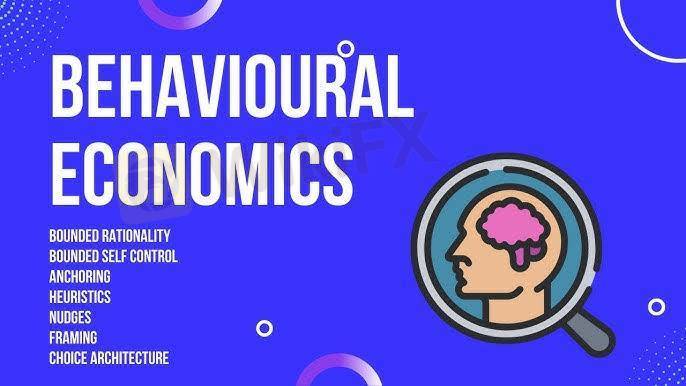
2025-02-12 16:35
الصناعةBehavior economics: understanding consumer choices
#firstdealofthenewyearastylz
Behavioral Economics: Understanding Consumer Choices
Behavioral economics is the study of how psychological, emotional, and social factors influence consumer decision-making. Unlike traditional economics, which assumes people make rational choices based on perfect information, behavioral economics recognizes that consumers often make irrational decisions due to cognitive biases and heuristics (mental shortcuts).
Key Concepts in Behavioral Economics
1. Bounded Rationality – People have limited cognitive resources and time, leading them to make "good enough" rather than optimal decisions.
2. Loss Aversion – People fear losses more than they value equivalent gains (e.g., losing $100 feels worse than gaining $100 feels good).
3. Prospect Theory – Consumers evaluate potential gains and losses relative to a reference point rather than absolute outcomes.
4. Nudging – Small changes in how choices are presented can influence consumer behavior without restricting options (e.g., placing healthy foods at eye level in a store).
5. Anchoring Effect – People rely too much on the first piece of information they receive when making decisions (e.g., a high original price makes a discounted item seem like a better deal).
6. Social Proof – Consumers are influenced by what others are doing or buying (e.g., product reviews, testimonials).
7. Time Inconsistency – People tend to prefer immediate rewards over long-term benefits (e.g., choosing to eat junk food now despite wanting to be healthy later).
8. Default Bias – People tend to stick with pre-set options rather than actively making choices (e.g., automatic enrollment in retirement plans increases participation).
9. Framing Effect – How choices are presented affects decisions (e.g., "90% fat-free" sounds healthier than "10% fat").
Real-World Applications
Marketing & Advertising: Companies use behavioral insights to design persuasive ads, pricing strategies, and promotions.
Public Policy: Governments use nudges to encourage savings, healthier lifestyles, and environmental behaviors.
Retail & E-commerce: Online retailers leverage social proof, anchoring, and urgency tactics (e.g., "Only 2 left in stock!") to influence purchasing decisions.
Understanding behavioral economics helps businesses, policymakers, and consumers make better decisions by recognizing and counteracting biases.
إعجاب 0
FX1618501564
المتداول
مناقشة حية
الصناعة
NFP updates URDU
الصناعة
دوج كوين
الصناعة
دوجكوين
الصناعة
صعود الذهب
الصناعة
لقاحات كورونا
الصناعة
السيارات
فئة المنتدى

منصة

المعرض

الوكيل

التوظيف

استيراتيجية التداول التلقائي

الصناعة

السوق

المؤشر
Behavior economics: understanding consumer choices
 Hong Kong | 2025-02-12 16:35
Hong Kong | 2025-02-12 16:35#firstdealofthenewyearastylz
Behavioral Economics: Understanding Consumer Choices
Behavioral economics is the study of how psychological, emotional, and social factors influence consumer decision-making. Unlike traditional economics, which assumes people make rational choices based on perfect information, behavioral economics recognizes that consumers often make irrational decisions due to cognitive biases and heuristics (mental shortcuts).
Key Concepts in Behavioral Economics
1. Bounded Rationality – People have limited cognitive resources and time, leading them to make "good enough" rather than optimal decisions.
2. Loss Aversion – People fear losses more than they value equivalent gains (e.g., losing $100 feels worse than gaining $100 feels good).
3. Prospect Theory – Consumers evaluate potential gains and losses relative to a reference point rather than absolute outcomes.
4. Nudging – Small changes in how choices are presented can influence consumer behavior without restricting options (e.g., placing healthy foods at eye level in a store).
5. Anchoring Effect – People rely too much on the first piece of information they receive when making decisions (e.g., a high original price makes a discounted item seem like a better deal).
6. Social Proof – Consumers are influenced by what others are doing or buying (e.g., product reviews, testimonials).
7. Time Inconsistency – People tend to prefer immediate rewards over long-term benefits (e.g., choosing to eat junk food now despite wanting to be healthy later).
8. Default Bias – People tend to stick with pre-set options rather than actively making choices (e.g., automatic enrollment in retirement plans increases participation).
9. Framing Effect – How choices are presented affects decisions (e.g., "90% fat-free" sounds healthier than "10% fat").
Real-World Applications
Marketing & Advertising: Companies use behavioral insights to design persuasive ads, pricing strategies, and promotions.
Public Policy: Governments use nudges to encourage savings, healthier lifestyles, and environmental behaviors.
Retail & E-commerce: Online retailers leverage social proof, anchoring, and urgency tactics (e.g., "Only 2 left in stock!") to influence purchasing decisions.
Understanding behavioral economics helps businesses, policymakers, and consumers make better decisions by recognizing and counteracting biases.
إعجاب 0
أريد أن اترك تعليق
تقديم
0تعليقات

لا توجد تعليقات حتى الآن ، كن أول شخص يعلق

تقديم
لا توجد تعليقات حتى الآن ، كن أول شخص يعلق